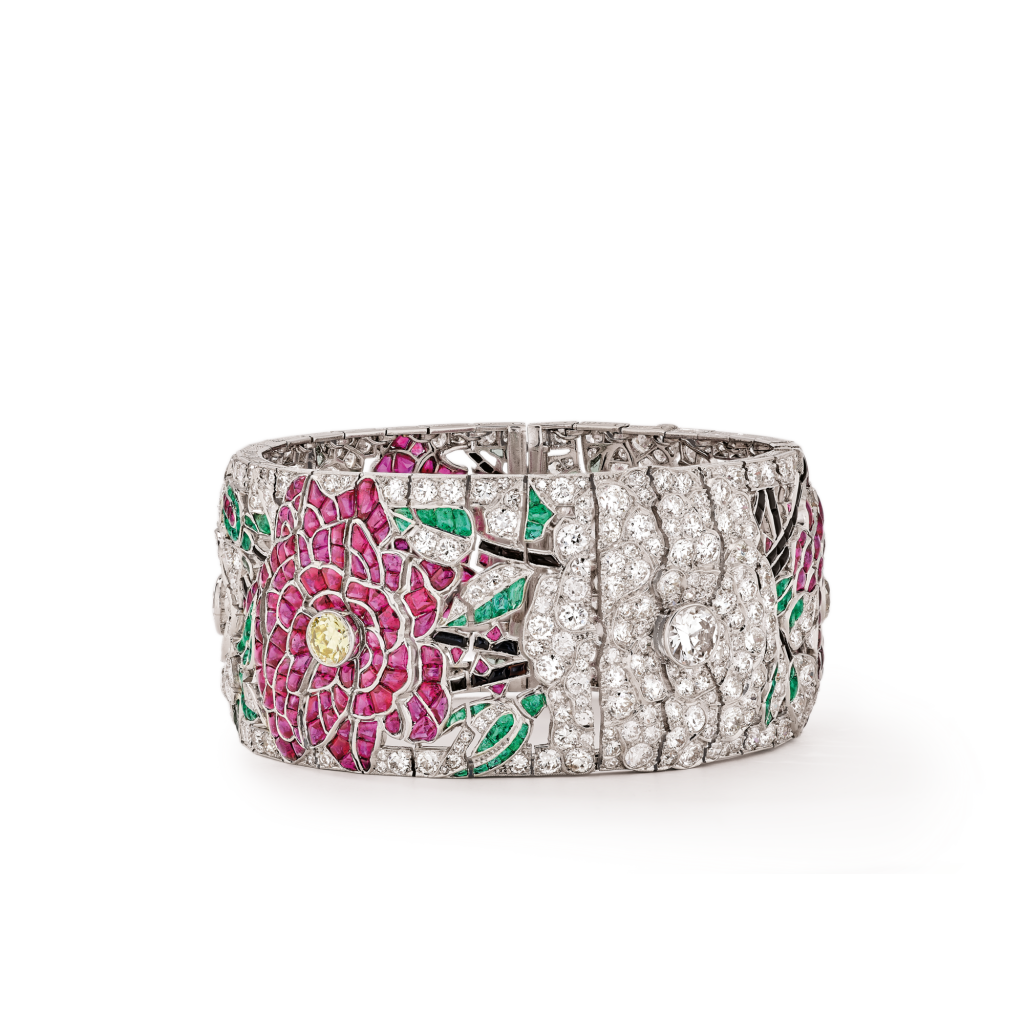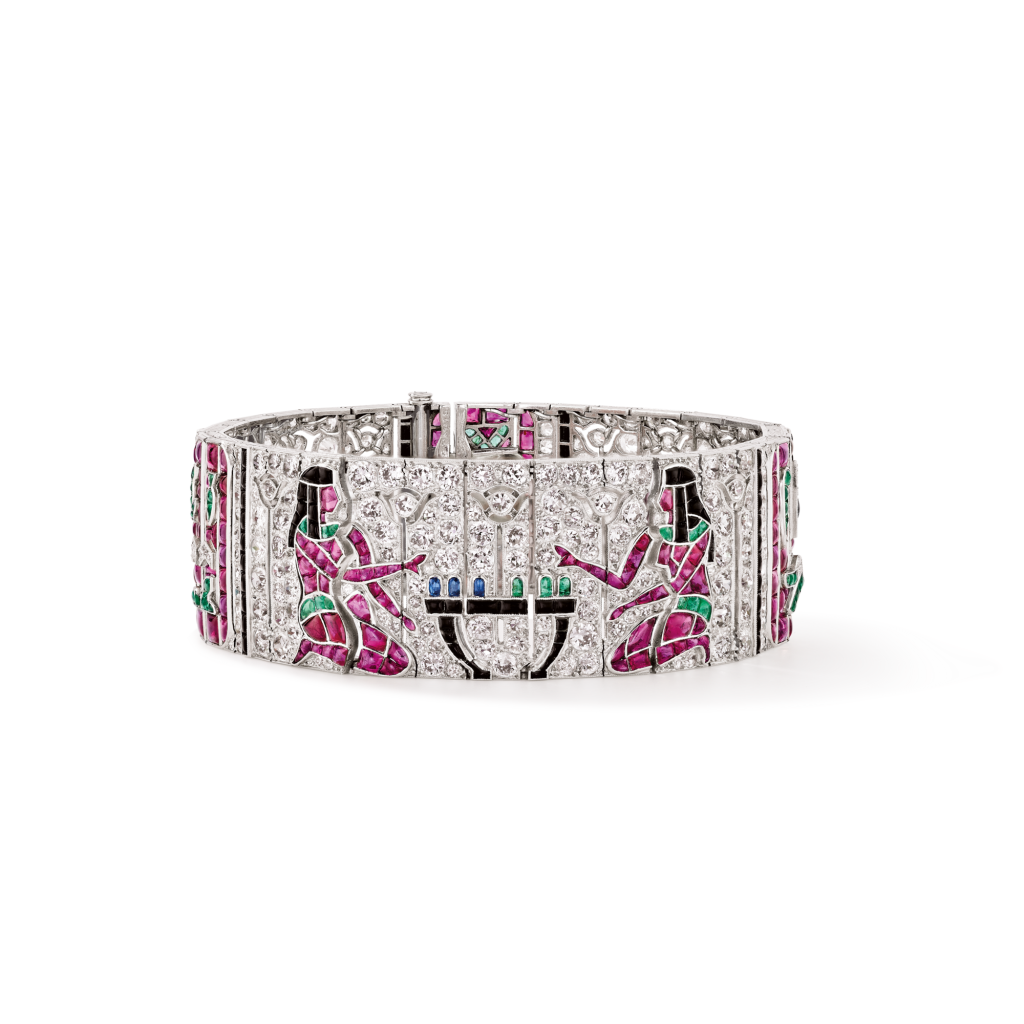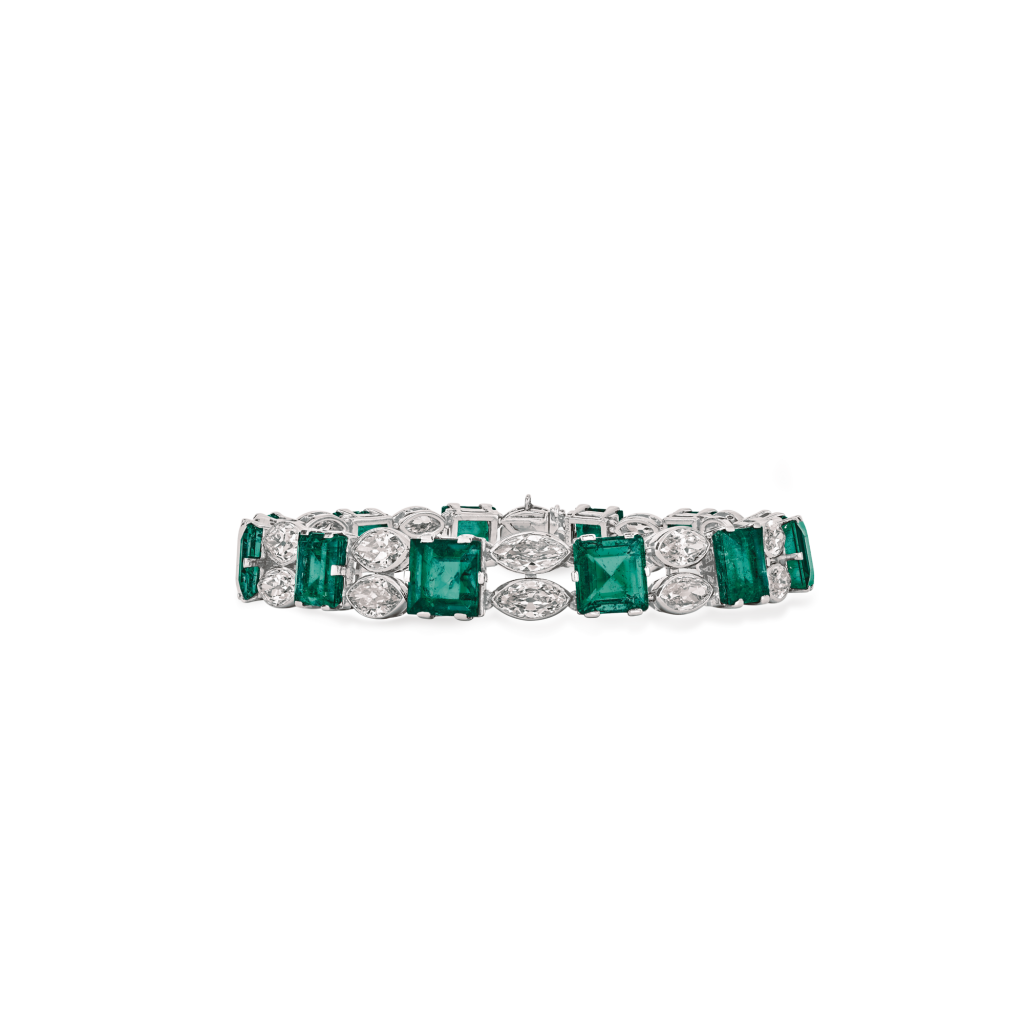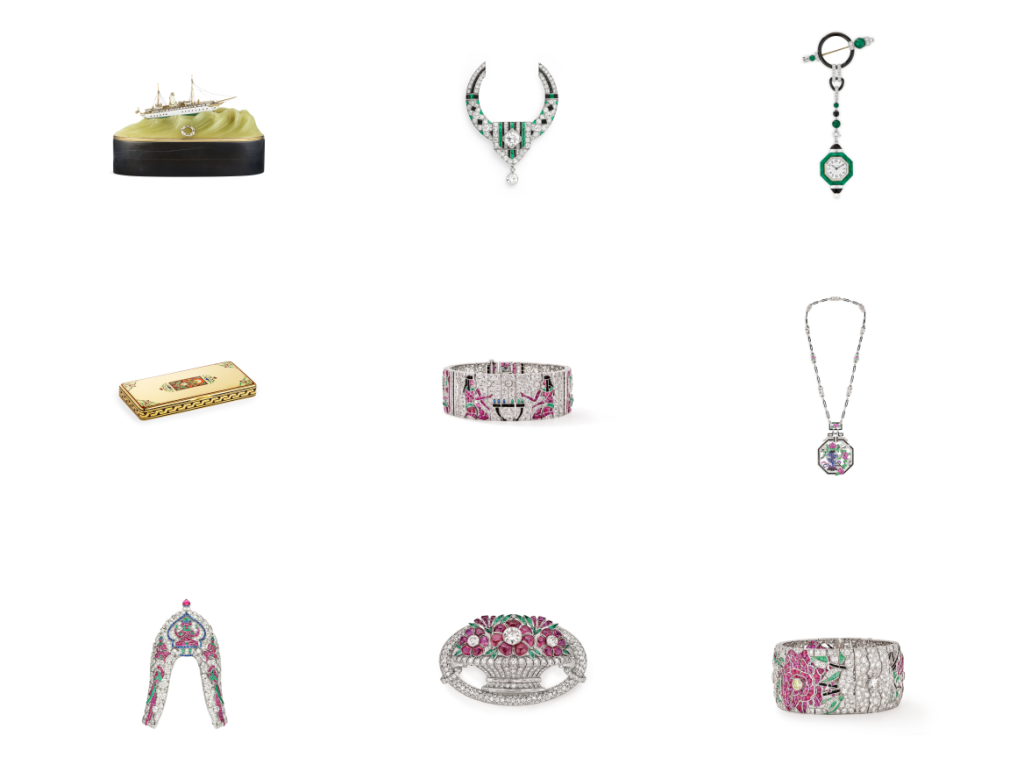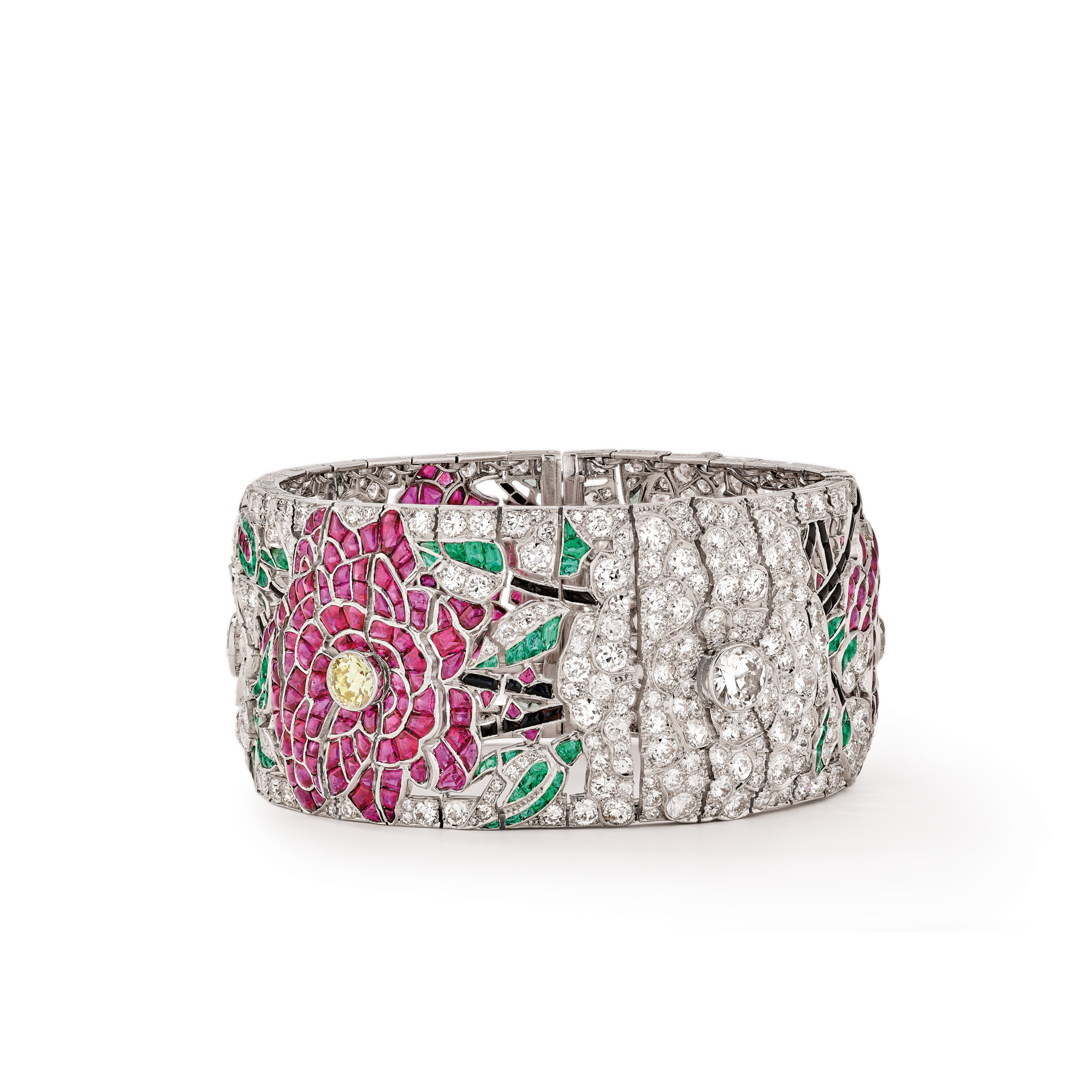
Fleurs enlacées, roses rouges et blanches bracelet

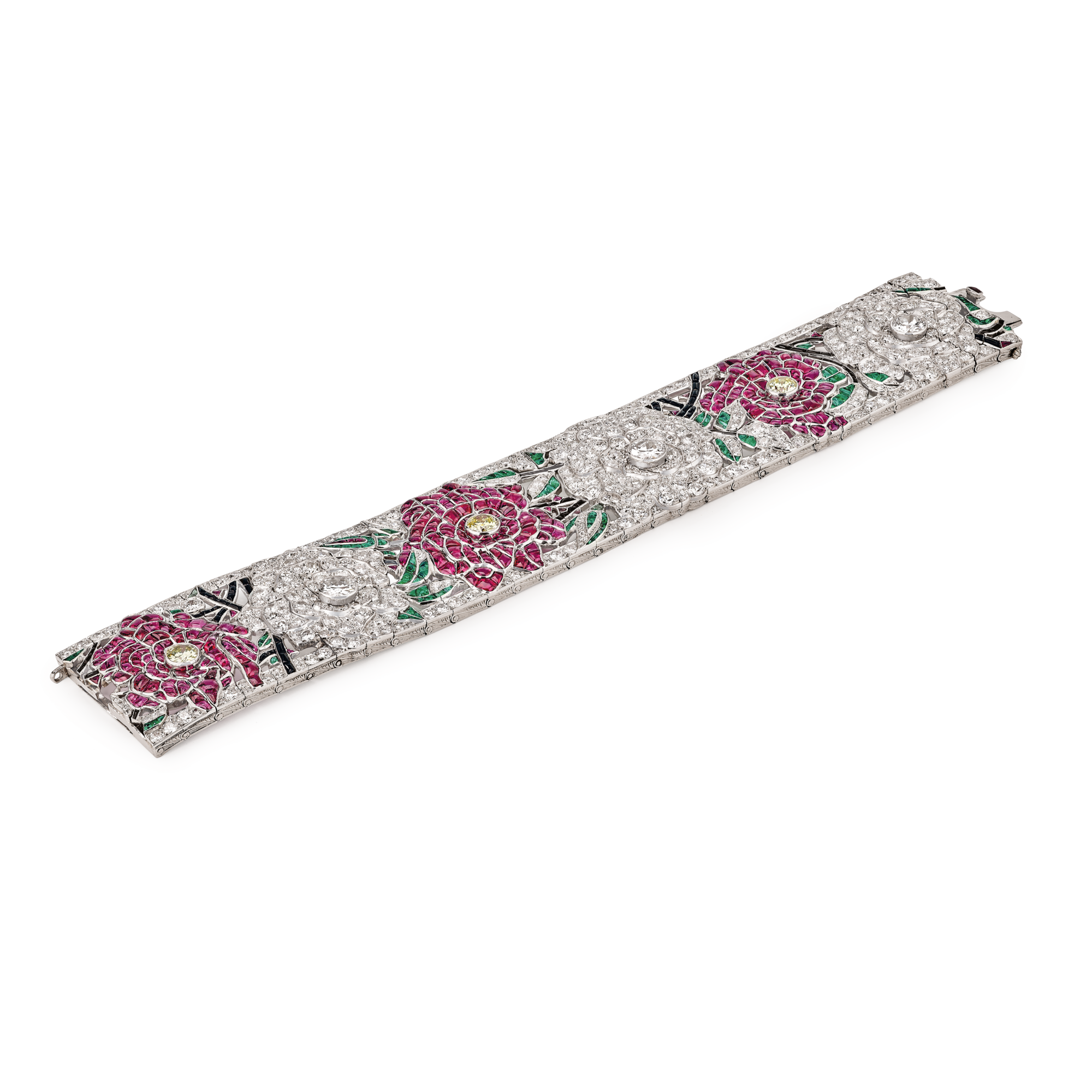
Creation details
- Creation year 1924
- Usage Bracelet
- Dimensions 195 × 35 mm
The bracelet known as Fleurs enlacées, roses rouges et blanches (literally “entwined flowers, red and white roses”) bracelet is undoubtedly the most eloquent example of Van Cleef & Arpels’ adherence to the Art Deco movement.
In the first half of the 1920s, the band bracelet was widely adopted as a format that allowed for the development of figurative iconography, as seen here, where branches of two-colored roses unfurl between two lines of brilliant-cut diamonds. Rose petals composed of uniform pave-set brilliants alternate with ones of buff-top rubies with yellow diamond centers. An openwork arrangement of onyx branches runs across this floral composition from which emerald and buff-top ruby leaves and buds burst forth.
The rose motif
By the second decade of the twentieth century, roses were very much back in vogue as a motif throughout all the decorative arts. It was during this decade that the first signs of the Art Deco movement were seen, with, notably, a tendency to look to eighteenth-century French art. The rose was the emblem of the reign of Marie-Antoinette, following the double portrait made of her by Élisabeth Vigée Le Brun in 1783, and it became the favorite motif of designers in the decade between 1910 and 1920. It is seen in Paul Iribe’s fabrics and again later in his work for the couturier Paul Poiret.1Christie Mayer Lefkowith, Paul Poiret and his Rosine Perfume (New York: Editions Stylissimo, 2007), 20.
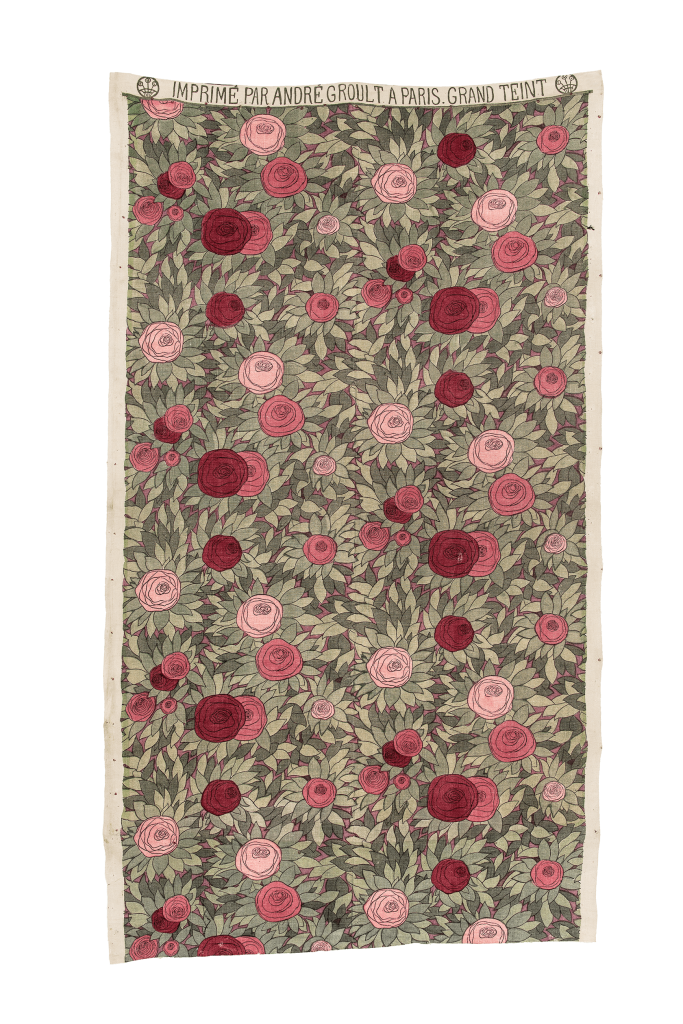
Nécessaire
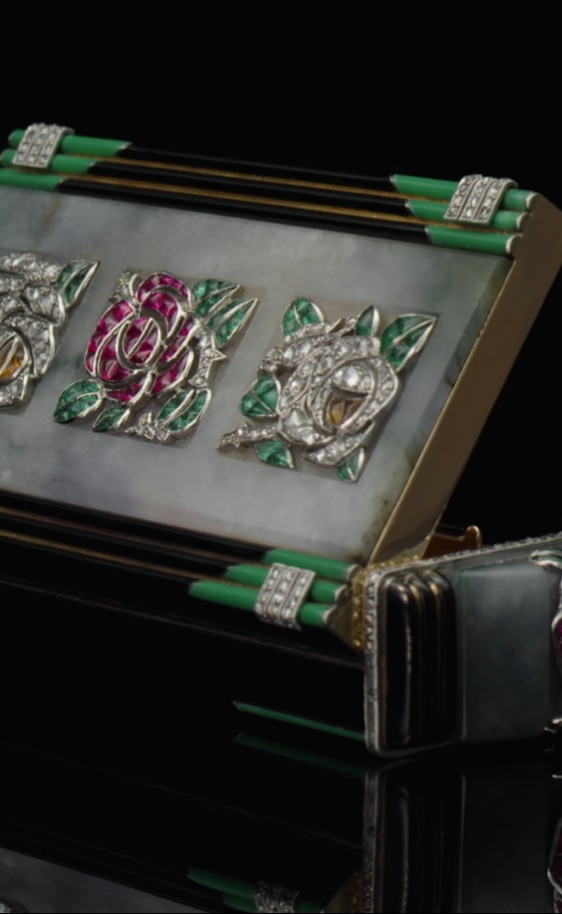
The 1925 Exposition internationale
This bracelet is part of a major jewelry program initiated by Van Cleef & Arpels in response to the spirit of creative competition that followed the announcement of the Exposition internationale des arts décoratifs et industriels modernes in 1925.
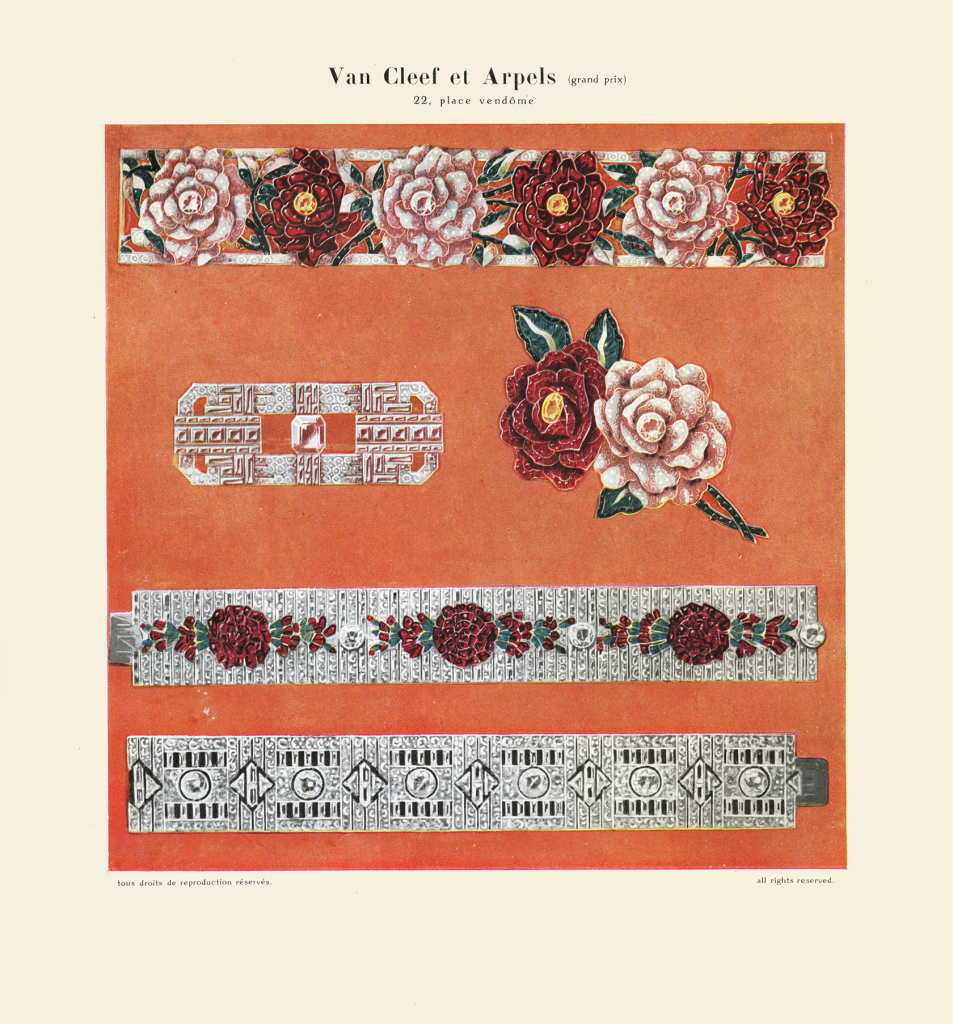
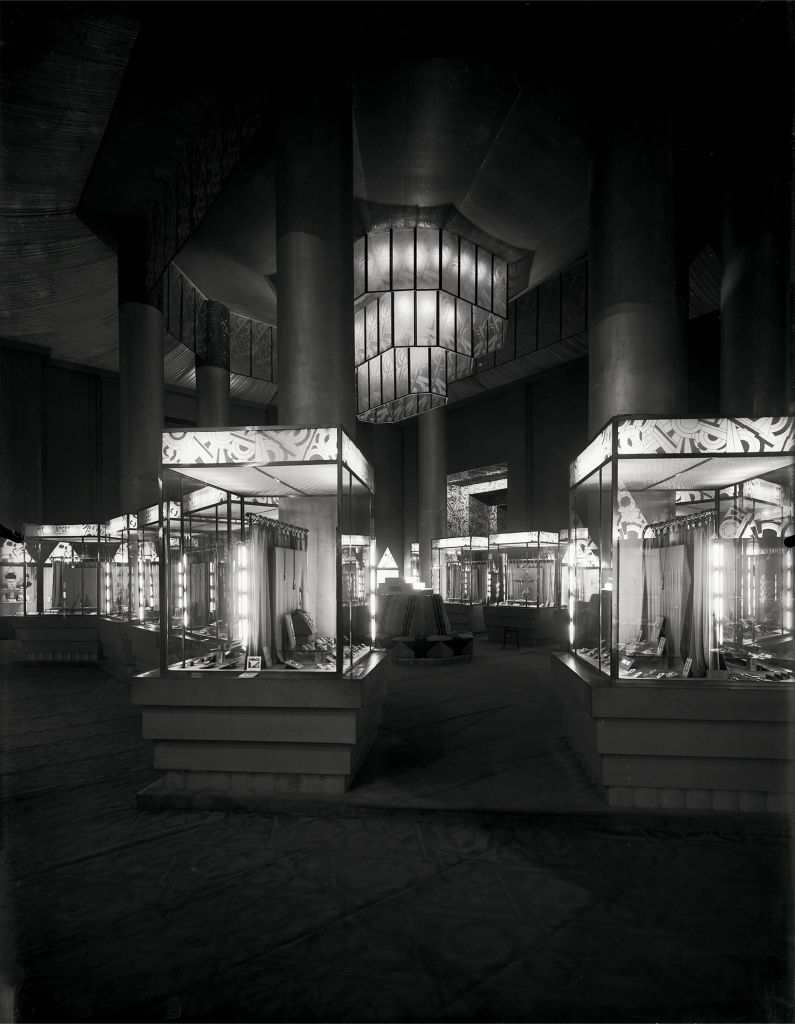
Jewelry presented by Van Cleef & Arpels at the 1925 Exposition
In 1924, the Maison designed two brooches that took up the alternating red and white roses of the bracelet with intertwined flowers, as well as a second band bracelet using the same jewelry pattern but this time, with carnations. These pieces were presented in display cases in Category XXIV of the Exposition given over to jewelers, winning the Grand Prix for Van Cleef & Arpels.
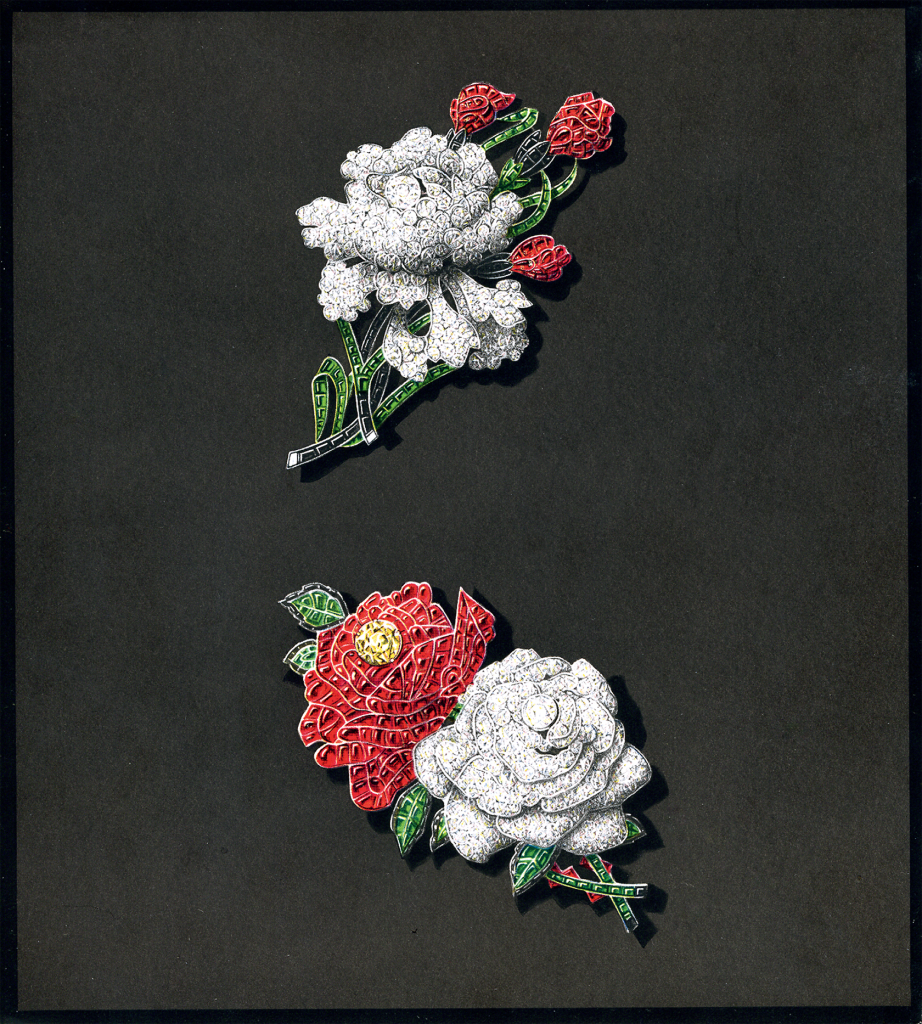
Reference to the 18th century
The pavilion titled Une ambassade française, and, in particular, the bedchamber for the ambassadress, illustrate, in the same way as the Fleurs enlacées, roses rouges et blanches bracelet, this reference to eighteenth-century furniture. The interior, designed by André Groult, a key figure in the emergence of the Art Deco style in the 1910s, housed a chiffonnier, a four-poster bed, and a commode, all three cased in shagreen, their curved forms borrowed from the Louis XV style.
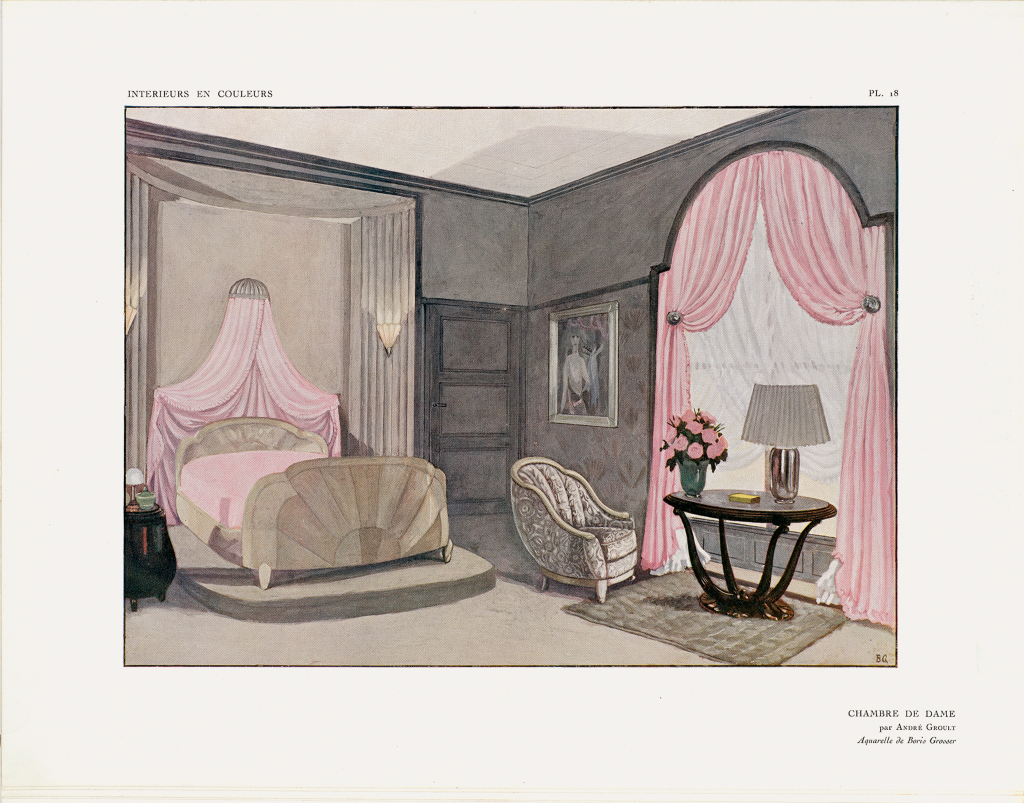
This creation
in archives
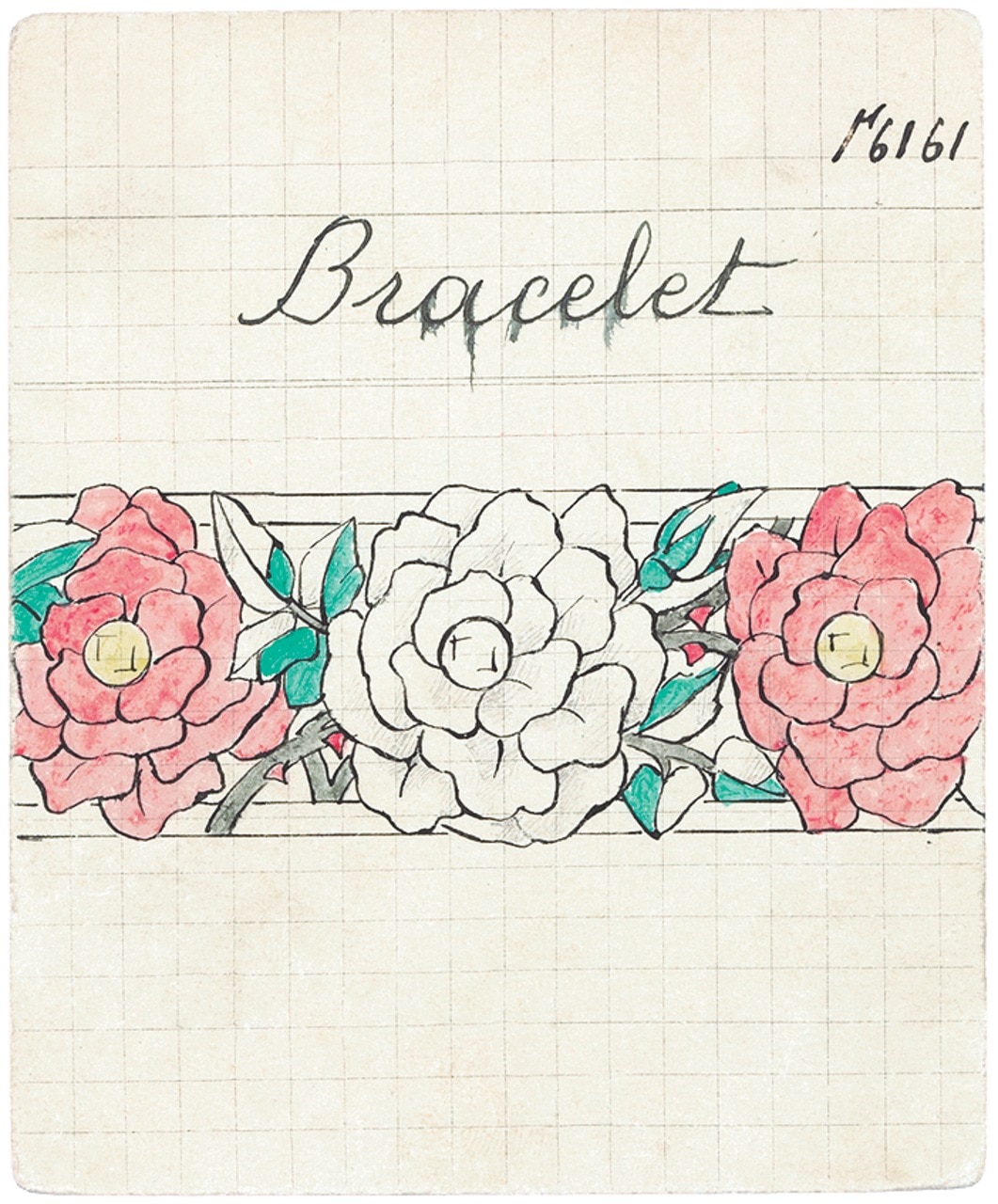
Product card of an Entwined flowers bracelet, 1924
To go deeper
